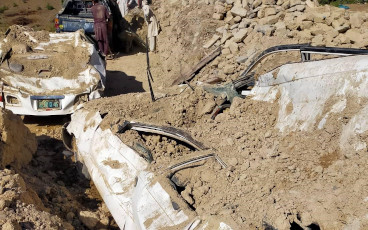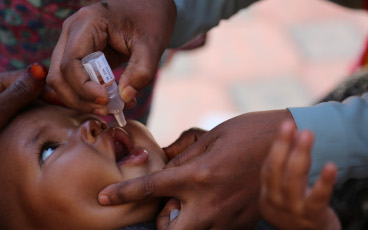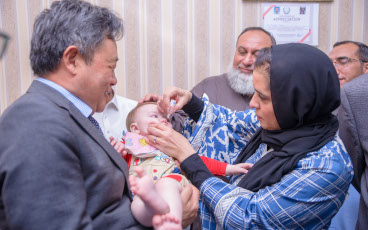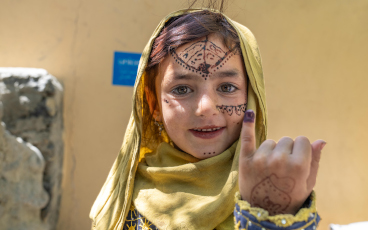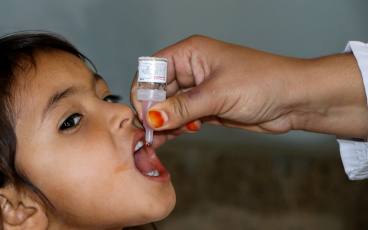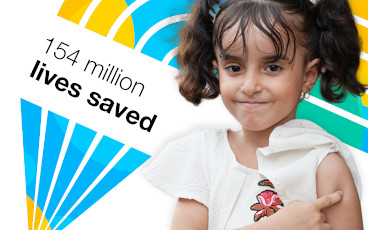Expansion of environmental surveillance for poliovirus aiding in regional eradication efforts
With the global polio case count at the lowest in history, there has never been a better time to invest in surveillance for poliovirus.
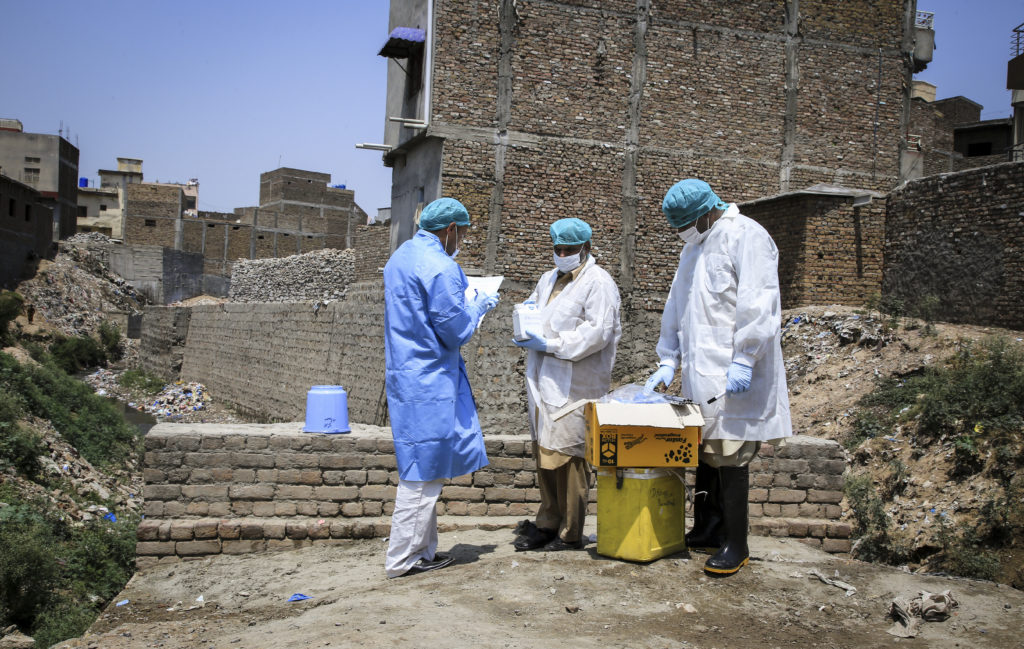
It’s a clear, summer day in Safdarabad, in the Punjabi province of Pakistan, and Mr. Patras Maseeh Bhatti and his colleagues have just arrived at “work” for the day. Surrounded by brick buildings instead of the inside of laboratory, they might look out of place in their attire. Dressed from head to toe in bio-hazard lab coats, long black rubber boots, and thick industrial gloves and armed with a bucket, their mission is to collect enough sewage from the selected sample site to be transferred in a separate container to the laboratory in Islamabad. Once there, the sample will be tested for poliovirus.
This sampling is part of a system of disease surveillance, which underpins the entire global effort to eradicate poliovirus. Without surveillance, it would be impossible to pinpoint where and how wild poliovirus is still circulating, or to verify when the virus has been extinguished from the wild.
Across the Eastern Mediterranean Region, disease detectives like Mr. Bhatti are becoming more and more important in the fight to end polio. In addition to surveillance for Acute Flaccid Paralysis (AFP), which involves the detection and reporting of children with rapid-onset ‘floppy’ limbs, environmental surveillance involves testing sewage or other environmental samples for the presence of poliovirus.
“This is the only mechanism where you will be able to detect viruses that are circulating with the absence of paralytic polio cases,” Dr Humayun Asghar of WHO’s Regional Polio Programme explains. “As we get closer to eradicating polio even with very high [vaccination] coverage in the population, the virus can still circulate undetected in under-immunized children.”
The growing network of disease detectives
Although AFP surveillance remains the gold standard for surveillance for polio, only one in approximately 200 cases of polio actually show symptoms of paralysis. The World Health Organization has been working closely with a number of countries within the Eastern Mediterranean Region to expand environmental surveillance networks and build capacity in field and lab staff. In endemic areas, environmental surveillance is providing critical supplemental information and data, enabling epidemiologists to tailor the eradication strategies even further. In other parts of the Region, it is proving a critical additional tool to mitigate the risks of a potential virus importation, particularly given the challenges that some countries face, including large-scale population movements, inaccessibility or insecurity.
“In these situations, any additional tools to supplement our AFP surveillance are critically valuable,” he says, “and we need a robust system in place for countries to be able to manage this network.”
In countries like Pakistan and Afghanistan, Dr Asghar says rapid and extensive population movement is the biggest risk for the virus spreading. “The virus moves with the people, so we cannot be sure that the virus is staying where we detect the cases. Here, environmental surveillance has proven extremely valuable because in the absence of many paralytic cases, we continue to detect wild poliovirus in the environment which tells us a lot about how and where the virus might be continuing to hide.”
The detection of poliovirus in countries not recording paralytic cases is also very useful, Dr Humayun says. During the polio outbreak in the Middle East in 2013-2014 this helped to inform partners carrying out the multi-country regional response where to further concentrate efforts in order to close the outbreak and ensure it did not spread further.
In both Pakistan and Afghanistan, environmental surveillance has been one of the key strategies for narrowing in on where the virus continues to circulate, and the lessons learned through the establishment of environmental surveillance in these countries is informing the expansion across the region.
In Lebanon and Jordan, where environmental sampling has been established in 2017, staff have been trained to collect samples from specified collection sites and to ensure the samples reach the laboratory in Amman in the right condition for processing.
Efforts to build on existing health infrastructure and disease surveillance systems in Iran, Sudan, Somalia, Syria and Iraq are underway, with plans for the expansion of environmental surveillance systems and lab networks in 2017.
Leaving a lasting legacy for health systems
Since the Global Polio Eradication Initiative (GPEI) began in 1988, the programme has mobilized and trained millions of community health workers and volunteers for surveillance. A standardized, real-time global surveillance and response network exists and is being put to full use.
Dr Humayun says that this investment in people and infrastructure is not only of benefit during the last mile of polio eradication, but will be a lasting legacy that the polio programme will leave behind for health systems of countries across the region.
“Polio surveillance methods, techniques, facilities and knowledge are our biggest assets, but they have applications beyond our programme. So, these laboratories can be of great value then to countries who need to develop their capacity in other diseases of public health importance,” he says.


